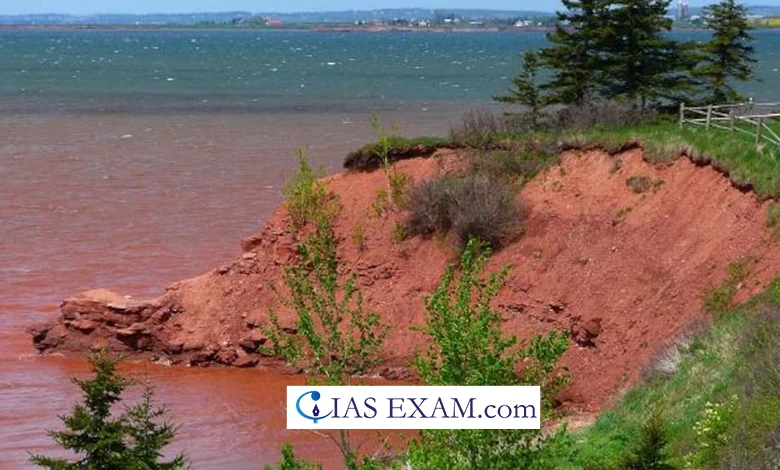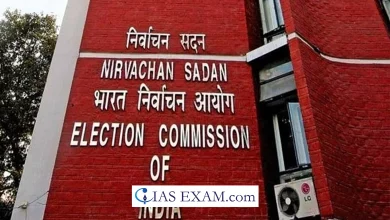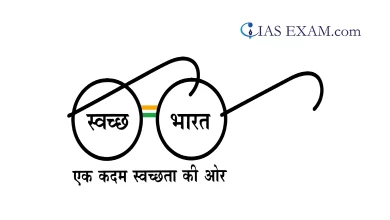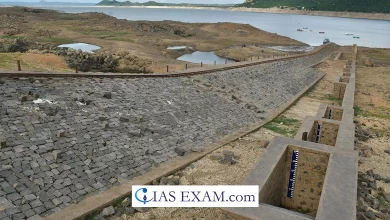Trends in India’s Soil Erosion
GS Paper 3 - Conservation, Environmental Pollution & Degradation

Context
Recently, a study conducted by a Group of Researchers has come out with pan-india data on surface soil erosion. While soil erosion is a natural phenomenon, increase in land use and land cover – which can be attributed to anthropogenic interventions like deforestation and rigorous farming practices over the years, has led to large swathes of land exposed to water erosion.
More about the Study
- Titled “Geospatial modelling and mapping of soil erosion in India,” the report marks the first attempt to classify soil erosion on a pan-India basis.
- The study categorizes soil erosion into six classifications, ranging from “minor” to “catastrophic,” based on the amount of soil eroded per hectare over a year.
- As per the Study, a little over 3% of the total surface soil in India has reported ‘catastrophic erosion’ or where erosion has been over 100 tonnes per hectare per annum.
- Assam and especially the Brahmaputra Valley, is one of the major hotspots for Erosion. It has reported a whopping 31% of its total surface soil exposed to ‘catastrophic erosion’.
Soil Erosion in India
- Soil erosion in India is a pressing environmental issue that demands immediate attention. With rapid urbanization, industrialization, and agricultural practices, the soil erosion rate has escalated to alarming levels.
- Soil erosion is the process by which soil is removed or displaced from its original location, often due to the action of wind, water, or human activities.
- It is a natural geological process accelerated by various factors such as deforestation, overgrazing, improper agricultural practices, urbanization, and climate change.
Key Trends in India
- Nearly 30% of the country’s landmass is experiencing “minor” soil erosion.
- Critical 3% (approx. 1500 sq km) faces “catastrophic” topsoil loss.
- The Brahmaputra Valley in Assam emerged as the most significant hotspot for soil erosion, with close to 300 square kilometers or 31% of its surface soil lost to “catastrophic” erosion.
- The lower Himalayan region, extending from Kashmir to Uttarakhand and beyond, and Odisha also face severe erosion challenges, posing threats to biodiversity and environmental stability.
Causes behind Soil Erosion
-
- Anthropogenic Causes: Soil erosion in India is primarily caused by human activities including deforestation, overgrazing, improper land use practices, and construction activities.
- Deforestation: Rampant deforestation for urban expansion and agricultural purposes exposes the soil to erosion by removing vegetation cover.
- Unsustainable Agricultural Practices: Intensive farming methods such as monoculture, excessive tilling, and improper irrigation contribute to soil degradation and erosion.
- Construction Activities: Urban development projects and infrastructure construction disturb the soil structure, leading to erosion.
- Natural Causes: The monsoon season, characterized by heavy rainfall, exacerbates soil erosion, especially in regions with steep slopes and poor vegetation cover.
- Climate Patterns: India’s diverse climatic conditions, characterized by monsoons, cyclones, and droughts, significantly influence soil erosion. Intense rainfall events during the monsoon season can trigger water erosion, while prolonged droughts lead to wind erosion in arid regions.
- Topography: The topographic features of different regions play a crucial role in soil erosion dynamics. Steep slopes are more susceptible to erosion due to the rapid runoff of water, whereas flat or gently sloping terrain may experience sheet erosion during heavy rainfall.
- Geological Processes: Geological factors such as soil composition, parent material, and geological structure influence soil erosion rates. Soil types with poor structure or high sand content are prone to erosion, while rocky terrain may experience erosion due to weathering and mass movement.
- Vegetation Cover: The presence or absence of vegetation greatly affects soil stability. Dense vegetation cover acts as a protective layer, reducing the impact of rainfall and wind on the soil surface. Deforestation, wildfires, and land clearing activities disrupt this natural defense mechanism, leading to increased soil erosion.
- Anthropogenic Causes: Soil erosion in India is primarily caused by human activities including deforestation, overgrazing, improper land use practices, and construction activities.
Impacts of Soil Erosion
- Loss of Fertile Soil: Eroded soil diminishes agricultural productivity, threatening food security.
- Water Pollution: Sediment runoff from eroded soil contaminates water bodies, affecting aquatic ecosystems and human health.
- Increased Flooding: Soil erosion reduces the land’s ability to absorb water, increasing the risk of floods and landslides.
- Desertification: Severe soil erosion can lead to desertification, rendering land unsuitable for cultivation or habitation.
Soil Management in India
Soil conservation is a systematic approach aimed at preserving soil fertility, preventing soil erosion, and restoring soil health. It encompasses various agricultural practices and management strategies designed to control soil erosion by inhibiting the detachment and transport of soil particles through air or water.
- To mitigate soil erosion, several remedial measures have been adopted, including contour bunding, contour terracing, controlled grazing, regulated forestry, cover cropping, mixed farming, and crop rotation.
- Afforestation, the process of planting trees, plays a crucial role in reducing soil erosion. It is equally important to combat indiscriminate tree felling, as it can exacerbate erosion.
- The issue of soil erosion is closely linked to flooding, which is more prevalent during the rainy season. Hence, efforts should be directed towards floodwater storage and rainwater diversion. Projects like the Ganga-Kaveri Link Canal Project, aimed at interlinking rivers, hold significant importance in this regard.
- Addressing the problem of soil erosion requires reclaiming gullies and ravines. Various schemes are being implemented, involving measures like gully mouth plugging, bund construction across gullies, gully leveling, and the planting of cover vegetation, especially in the Chambal ravines of Madhya Pradesh.
Way Forward
Soil erosion is a major threat to the sustainable development of India. It requires proper prevention and mitigation measures to conserve and enhance the soil resources of India. Addressing soil erosion in India requires concerted efforts from government agencies, environmental organizations, and local communities. By implementing sustainable land management practices and raising awareness about soil conservation, India can mitigate the adverse impacts of soil erosion and safeguard its natural resources for future generations.
SOURCE: Down to Earth





.png)



